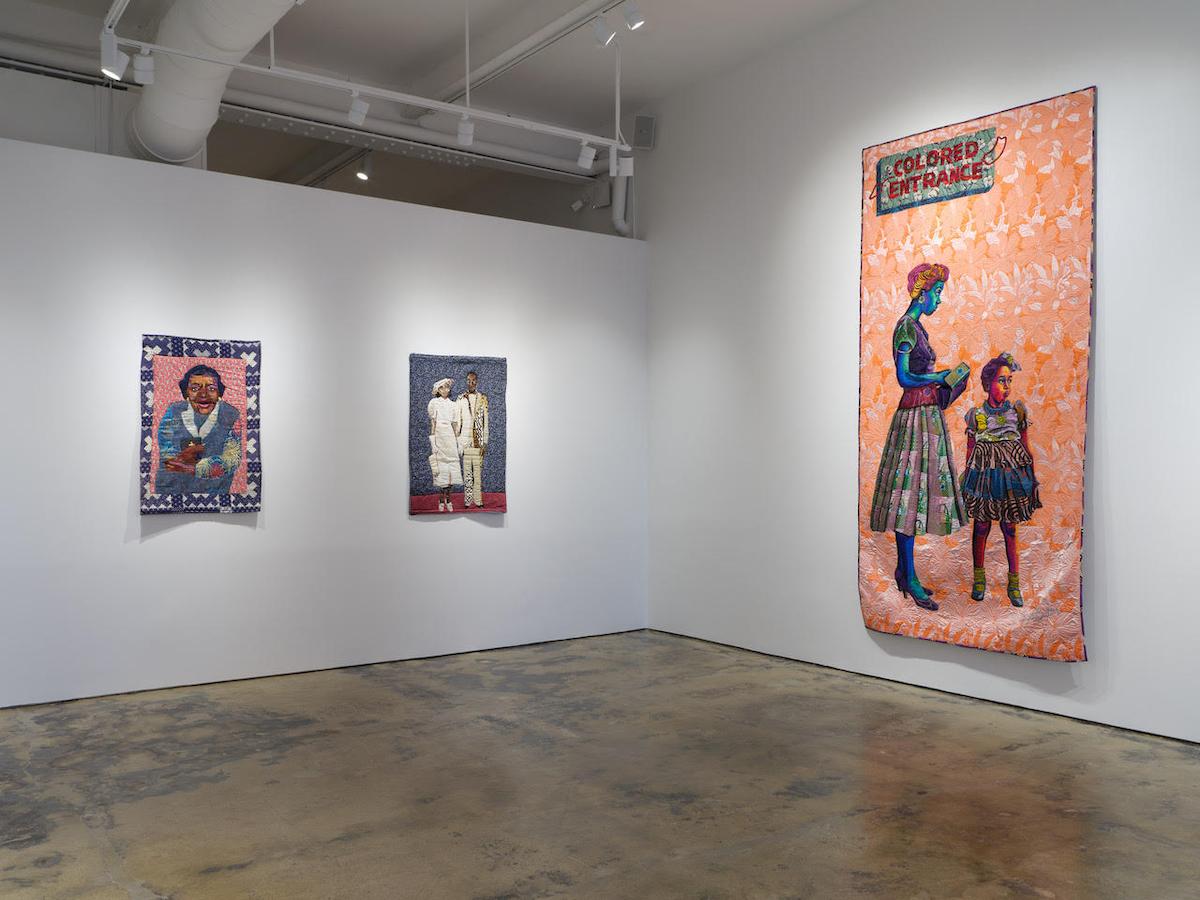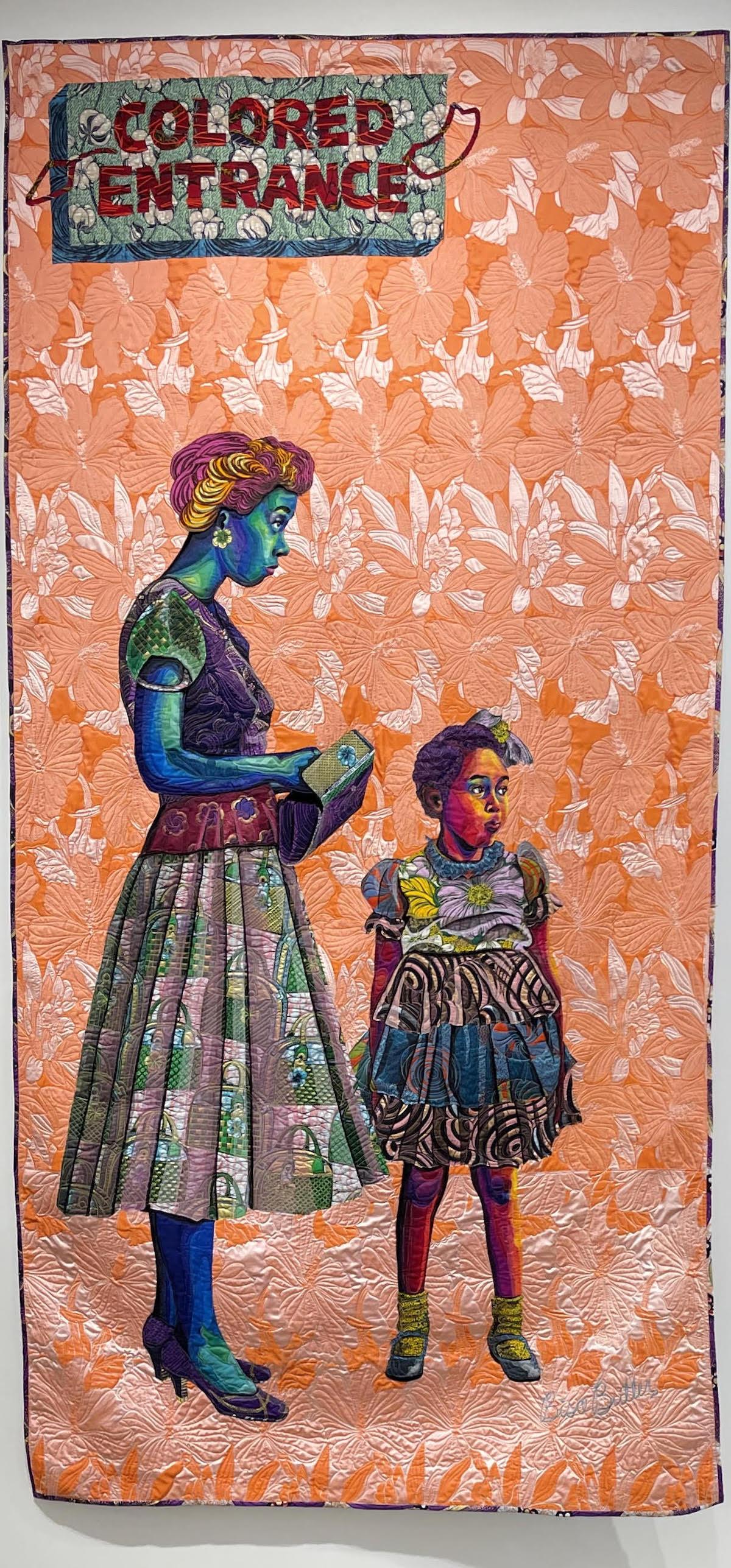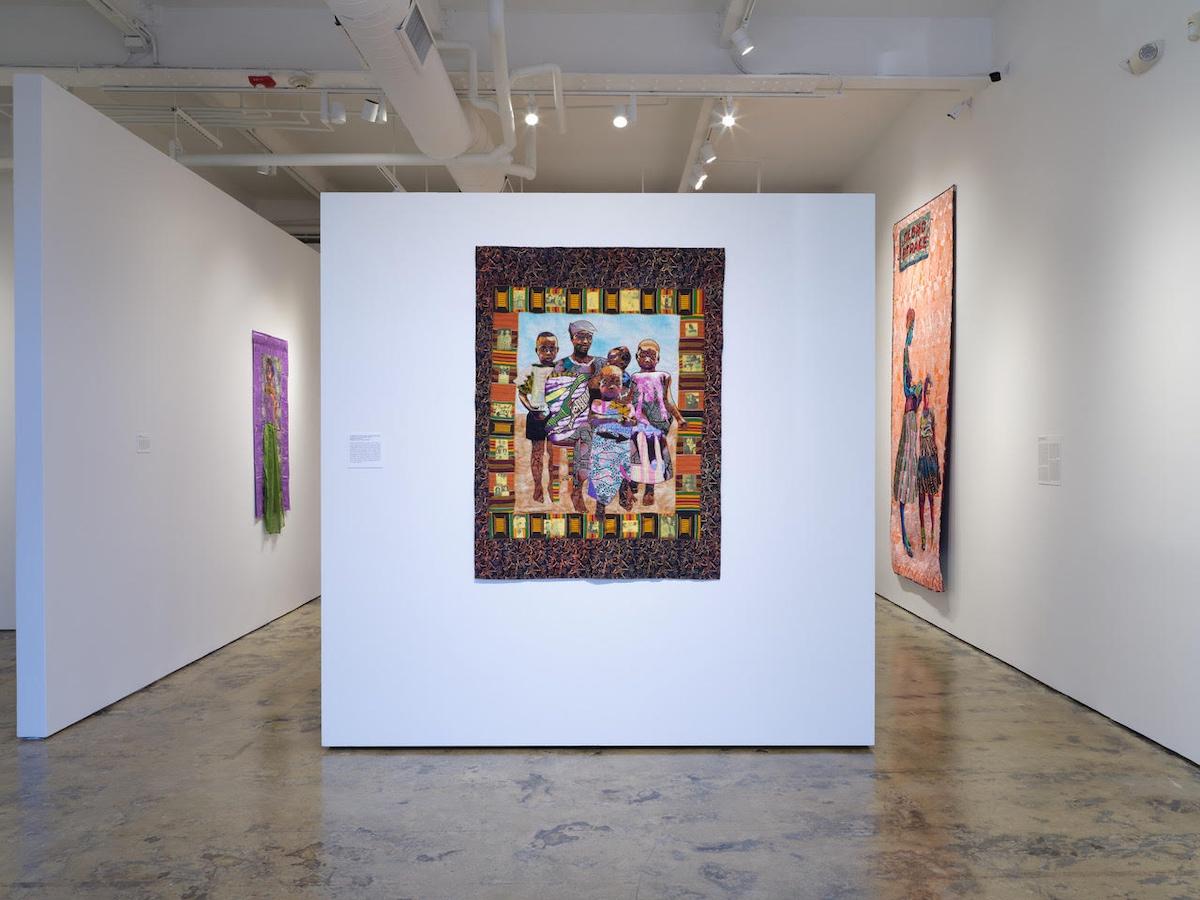Art & Object (A&O): So you were trained as a painter and then shifted to making quilts when you went for your graduate degree. What prompted that shift? Does your background as a painter help your quilt making?
Bisa Butler (BB): Absolutely. I chose painting because, coming straight out of high school I knew I wanted to be an artist, but I had no clue what that would entail. So I thought, I’ll be a painter, that will be good. But I really struggled to find my own voice in painting, which is a crux for every artist.
After about a year, I thought about teaching, so I went back to school at Montclair State, and it was there that I sewed my first quilt. I don’t come from a quilting background. My grandmother and mother sewed because they loved fashion, and they gave me all the remnants of their pieces, which I used for quilting. I used silk, chiffon, lace, gaberdine, wool. I still use these today, whereas a typical quilt would be made of cotton.
I first made a quilted portrait of my grandmother. We both loved it, and it felt so right. I still make portraits, not just of my family and friends, but of people who remind me of people I know, typically people of the African American community, or a portrait of a famous figure. And I still use those garment fabrics because I like the way they look when I layer them. It’s kind of like painting, using light, shadow, contour, and rendering, but with fabric.



























![DEl Kathryn Barton [Australian b. 1972] the more than human love , 2025 Acrylic on French linen 78 3/4 x 137 3/4 inches 200 x 350 cm Framed dimensions: 79 7/8 x 139 inches 203 x 353 cm](/sites/default/files/styles/image_5_column/public/ab15211bartonthe-more-human-lovelg.jpg?itok=wW_Qrve3)



